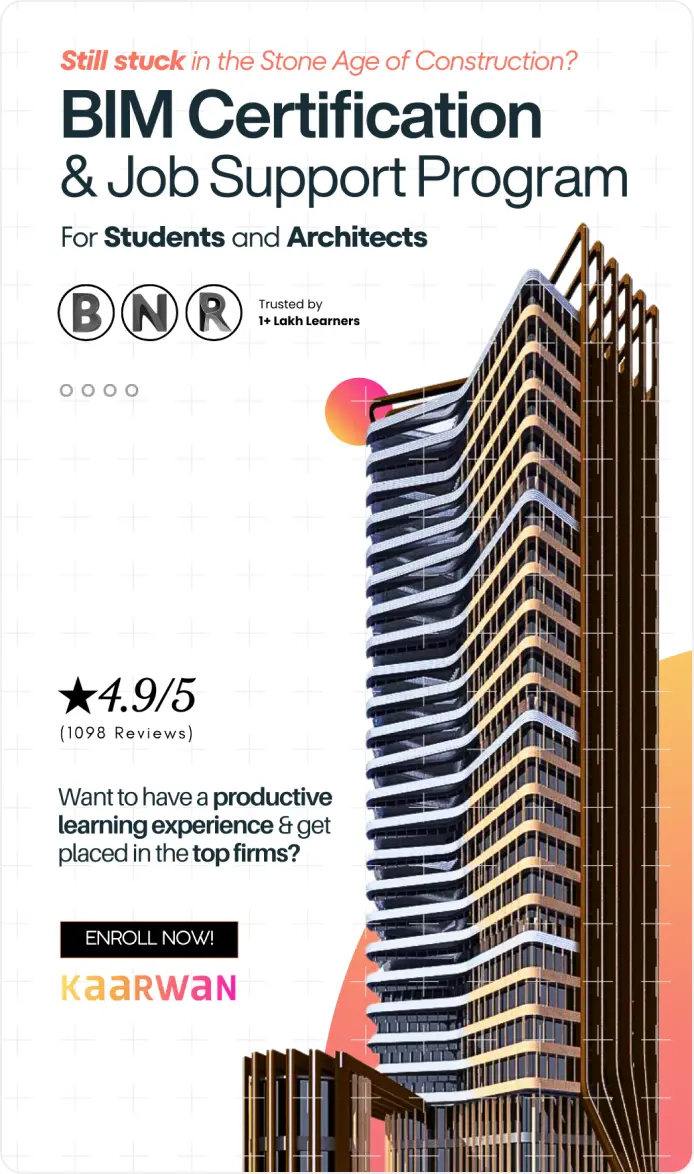Building Information Modeling (BIM) is transforming the construction industry, especially for existing structures. As cities grow and infrastructure ages, there's a pressing need to upgrade and maintain buildings efficiently. BIM for existing buildings, combined with the Scan to BIM workflow, is the innovative solution reshaping how we approach these challenges.
The Evolution of Building Information Modeling (BIM)
Historical Context of BIM
BIM has evolved from simple 2D drawings to sophisticated 3D models that encompass every detail of a building's lifecycle. This technological leap has revolutionized how architects, engineers, and construction professionals approach building design and management.
Modern Advancements in BIM
Today's BIM technology provides a digital representation of physical and functional characteristics. These advancements make BIM indispensable for modern construction and renovation projects, offering detailed insights and streamlined workflows.
Understanding Scan to BIM Workflow
Definition and Overview
Scan to BIM is a process that involves scanning an existing structure using advanced technology, then converting the scanned data into a detailed BIM model. This workflow bridges the gap between the physical building and its digital twin, ensuring accuracy and comprehensive data integration.
Key Components of Scan to BIM
The Scan to BIM process includes several key components: laser scanning, point cloud generation, and data processing. Each of these steps is crucial in creating an accurate and functional BIM model from existing building structures.
The Importance of BIM in Modern Construction
Efficiency and Precision
In today's fast-paced construction environment, efficiency, precision, and sustainability are paramount. BIM addresses these needs by offering a holistic view of the building, enabling better decision-making, reducing errors, and facilitating collaboration among stakeholders.
Collaboration and Communication
BIM enhances collaboration among all parties involved in a construction project. With a shared digital model, architects, engineers, and contractors can communicate more effectively, leading to more efficient project execution.
Advantages of BIM for Existing Buildings
Enhanced Documentation
Utilizing BIM for existing buildings offers numerous benefits. It enhances the accuracy of as-built documentation, improves project visualization, streamlines renovation processes, and supports effective facility management.
Early Issue Detection
Additionally, BIM helps in identifying structural issues early, reducing costly rework. This proactive approach saves time and resources by addressing problems before they escalate.
How Scan to BIM Enhances Traditional BIM
Direct Representation
While traditional BIM relies on existing data and drawings, Scan to BIM provides a direct and accurate representation of the current state of a building. This approach captures every detail, from structural elements to MEP systems, ensuring a more reliable and detailed model.
Enhanced Detail
The enhanced detail provided by Scan to BIM ensures that every aspect of the building is accurately documented. This comprehensive data set allows for more precise planning and execution of renovation projects.
Step-by-Step Guide to the Scan to BIM Process
Preparation and Planning
Effective Scan to BIM begins with thorough preparation. This includes understanding the scope of the project, identifying critical areas, and planning the scanning strategy.
Data Collection Techniques
Data collection is a crucial phase in the Scan to BIM workflow. Techniques include laser scanning, photogrammetry, and drone surveys, each offering unique advantages based on the project requirements.
Laser Scanning Technology
How Laser Scanners Work
Laser scanners emit laser beams to capture precise measurements of a building's geometry. This technology is highly accurate and can capture millions of data points, creating a detailed point cloud.
Benefits of Laser Scanning
The precision of laser scanning ensures that the resulting BIM model is a true reflection of the existing building. This minimizes errors and discrepancies, providing a solid foundation for further analysis and planning.
Point Cloud Generation
Definition and Importance
The point cloud is a collection of data points representing the scanned surface. This raw data forms the foundation of the BIM model, capturing every minute detail of the existing structure.
Conversion to BIM Models
Converting point clouds into BIM models involves specialized software that interprets the data and generates a detailed 3D model. This model can then be used for analysis, planning, and project execution.
Accuracy and Precision in Scan to BIM
Importance of Accuracy
Accuracy is paramount in the Scan to BIM process. The precision of laser scanning technology ensures that the resulting BIM model is a true reflection of the existing building, minimizing errors and discrepancies.
Techniques to Ensure Precision
Various techniques are employed to ensure precision, including regular calibration of equipment and validation checks throughout the scanning process. These measures maintain high standards of accuracy.
Challenges in Implementing Scan to BIM
High Initial Costs
Despite its advantages, Scan to BIM comes with challenges. These include high initial costs, the need for specialized equipment, and the complexity of processing large data sets.
Complex Data Processing
Processing the vast amounts of data generated by laser scanning can be complex and time-consuming. Specialized software and expertise are required to manage and interpret this data effectively.
Overcoming Obstacles: Best Practices
Investing in Quality Equipment
Adopting best practices can mitigate the challenges of Scan to BIM. This includes investing in high-quality equipment, training personnel, and using advanced software for data processing and model generation.
Training and Development
Continuous training and skill development are essential to keep up with the latest technologies and methodologies in this rapidly evolving field. Investing in human resources is as crucial as investing in technology.
Real-World Applications of Scan to BIM
Historical Preservation
Scan to BIM is being used in various sectors, including historical preservation, infrastructure rehabilitation, and facility management. Its ability to capture detailed as-built conditions makes it invaluable for renovation and maintenance projects.
Infrastructure Rehabilitation
In infrastructure rehabilitation, Scan to BIM provides precise data that informs effective repair and upgrade strategies. This approach ensures that renovations are both efficient and cost-effective.
The Future of Scan to BIM in Construction
Technological Advancements
The future of Scan to BIM looks promising, with ongoing advancements in scanning technology and software capabilities. As the construction industry continues to embrace digital transformation, Scan to BIM will play a crucial role in modernizing existing buildings.
Broader Adoption
As more professionals recognize the benefits of Scan to BIM, its adoption will likely increase. This widespread use will drive further innovation and improvement in the technology.
Technological Innovations in Scan to BIM
AI and Machine Learning
Innovation is at the heart of Scan to BIM's evolution. New technologies, such as AI-powered analysis and improved scanning hardware, are making the process faster, more accurate, and more accessible to a broader range of projects.
Enhanced Scanning Hardware
Enhanced scanning hardware is improving the accuracy and efficiency of data collection. These innovations are expanding the capabilities of Scan to BIM, making it a more powerful tool for the construction industry.
Software and Tools for Scan to BIM
Popular Software Options
Various software tools are available for Scan to BIM, each offering unique features for data processing, model generation, and analysis. Popular options include Autodesk ReCap, Leica Cyclone, and FARO Scene, among others.
Choosing the Right Tool
Choosing the right software tool depends on the specific needs of the project. Factors to consider include the complexity of the building, the level of detail required, and the expertise of the users.
Training and Skill Development for BIM Professionals
Importance of Training
Effective implementation of Scan to BIM requires skilled professionals. Continuous training and skill development are essential to keep up with the latest technologies and methodologies in this rapidly evolving field.
Professional Development Programs
Professional development programs and certifications can enhance the skills of BIM professionals. These programs provide the knowledge and expertise needed to effectively utilize Scan to BIM technology.
Cost Implications and ROI of Scan to BIM
Initial Investment
While the initial investment in Scan to BIM can be significant, the long-term benefits outweigh the costs. Improved accuracy, reduced rework, and enhanced project management contribute to a positive return on investment.
Long-Term Benefits
The long-term benefits of Scan to BIM include more efficient project execution, better resource management, and reduced errors. These advantages translate into cost savings and higher project success rates.
Sustainability and Environmental Impact of BIM
Resource Efficiency
BIM promotes sustainability by facilitating efficient use of resources, reducing waste, and enabling better planning for energy-efficient upgrades. This makes it a valuable tool for environmentally conscious construction practices.
Environmental Benefits
The environmental benefits of BIM include reduced carbon footprint, optimized material usage, and enhanced lifecycle management. These factors contribute to more sustainable building practices.
Conclusion: Embracing the Future of Construction
The Role of Scan to BIM
The integration of Scan to BIM for existing buildings is revolutionizing the construction industry. By embracing this technology, we can enhance the accuracy of as-built documentation, streamline renovation processes, and support sustainable building practices.
Looking Ahead
As we look to the future, Scan to BIM will continue to be a pivotal tool in the modernization and maintenance of our built environment. Embracing this technology is essential for staying ahead in the rapidly evolving construction landscape.
Ready to master BIM and Scan to BIM workflows? Enroll in our Professional Revit & BIM Certification Program today and transform your construction career with cutting-edge skills!
Visit the Kaarwan website for more insights!

